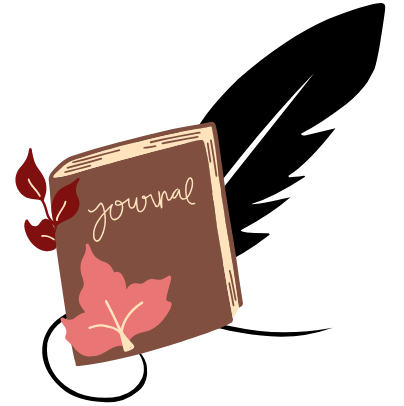As a high school English teacher, I’ve seen the transformative power of creative writing. There’s an undeniable magic in watching students find out about their unique voices and breathe life into characters and worlds of their own creation.
But even the most passionate young writers sometimes find themselves staring at a blank page, unsure where to begin.
That’s where creative writing prompts come in. They’re the spark that can ignite a wildfire of creativity, pushing students to explore new territories in their writing and tap into wells of imagination they didn’t know they possessed.
The right prompt challenges assumptions, provokes emotional responses, and opens doors to entirely new realms of storytelling.
I’ve curated this collection of 25 innovative creative writing prompts specifically designed for high school students. These aren’t your typical “write about your summer vacation” prompts.
Instead, they tap into the interests, experiences, and imaginations of today’s teens, challenging them to think critically, empathize deeply, and craft stories that resonate on many levels.
From exploring alternate histories to grappling with the ethical implications of future technologies, these prompts will take your students on a progress through time, space, and the depths of human emotion.
They’ll write from unexpected perspectives, experiment with unconventional narrative structures, and push the boundaries of what they thought was possible in their writing.
The Importance of the Prompt: Unlocking Creative Potential
Creative writing prompts are catalysts for critical thinking, empathy development, and self-discovery. A well-crafted prompt challenges students to see the world from new perspectives, grapple with complex ethical dilemmas, and explore the nuances of human emotion.
When selecting or creating prompts for high school students, it’s crucial to consider their developmental stage and interests. Teens are naturally drawn to questions of identity, justice, and their place in the world.
Prompts that tap into these themes while also incorporating elements of fantasy, science fiction, or current events can be particularly engaging.
The key is to strike a balance between structure and freedom. A prompt should provide enough guidance to get the creative juices flowing, but not so much that it stifles originality.
It’s also essential to create a safe, judgment-free space where students feel comfortable taking risks in their writing.
25 Innovative Creative Writing Prompts for High School Students
1. The Last Text Message
Write a story that begins with the last text message you sent or received. How does this seemingly mundane communication set off a chain of unexpected events?
2. Sensory Overload
Describe a scene using all five senses, but focus on the least obvious sense for that situation. What does a thunderstorm taste like?
What’s the texture of a first kiss?
3. Alternate History
Rewrite a significant historical event with one major change. How does this ripple effect alter the present day?
Consider the social, technological, and cultural implications.
4. AI Awakening
An artificial intelligence becomes self-aware. Tell the story from it’s perspective as it grapples with questions of consciousness, morality, and it’s relationship to humanity.
5. Emoji Tale
Write a short story using only emojis, then translate it into words. How does this exercise in visual storytelling change your approach to narrative?
6. Time Capsule Discovery
You unearth a time capsule from 100 years in the future. What’s inside, and what does it reveal about the world to come?
7. Soundtrack of Your Life
Create a playlist for your life story and explain why each song represents a specific chapter. How does music shape our memories and identities?
8. Viral Video Aftermath
A video of you goes viral overnight. Describe the next 24 hours as you navigate sudden fame (or infamy) in the age of social media.
9. Climate Fiction
Write a day in the life of someone living in a world drastically altered by climate change. How have society, technology, and daily routines adapted?
10. Multiverse Mirror
You encounter a mirror that shows alternate versions of yourself. Describe three different reflections and the choices that led to these divergent paths.
11. Memory Market
In what happens when memories can be bought and sold, what’s the most valuable memory, and why? Explore the ethical implications of commodifying human experiences.
12. Silent Conversation
Write a dialogue between two characters who can’t speak aloud. How do they talk, and what tensions arise from this constraint?
13. Taste of Emotions
If emotions had flavors, describe a complex emotional experience as a gourmet meal. How does this sensory approach deepen our understanding of feelings?
14. Everyday Superhero
Create a superhero whose powers are seemingly mundane but surprisingly useful. How do they use these abilities to make a difference in their community?
15. Anthropomorphic Objects
Write from the perspective of an inanimate object in your school. What secrets does it witness, and how does it view the humans around it?
16. Dream Thief
Someone is stealing people’s dreams. How does society change when our subconscious is no longer private?
Explore themes of privacy, creativity, and the nature of consciousness.
17. Reverse Aging
Write about what happens when people age backwards. How does this affect relationships, life milestones, and our understanding of wisdom and experience?
18. Colorblind Universe
Describe a universe where color doesn’t exist. How would you portray beauty, art, and the natural world without relying on visual hues?
19. Genetic Memory
You suddenly access the memories of all your ancestors. How does this flood of generational knowledge change your identity and your view of history?
20. Language of Plants
Scientists find out about that plants have been communicating complex ideas all along. What secrets do they reveal about the world and our place in it?
21. Emotion Switch
You wake up able to switch off any emotion at will. What are the consequences of this power for your relationships and sense of self?
22. Quantum Pet
Your new pet exists in a state of quantum superposition. Describe a day in your life with a companion that’s simultaneously there and not there.
23. Synesthesia Onset
You suddenly develop synesthesia, a condition where senses blend together. Describe your new sensory experiences and how they change your perception of the world.
24. Digital Afterlife
In what happens when consciousness can be uploaded, write about the first generation to never truly “die.” How does this change our understanding of life, death, and legacy?
25. Empathy Pandemic
An airborne virus causes extreme empathy. How does society change in a week, a month, a year?
Explore the benefits and challenges of what happens when everyone feels each other’s emotions.
Implementing Creative Writing Prompts in the Classroom
To get the most out of these prompts, consider the following strategies:
Warm-up Exercises
Use shorter versions of these prompts as 5-10 minute writing exercises at the beginning of class to get creative juices flowing. This helps students transition into a creative mindset and can serve as a springboard for longer writing sessions.
Group Brainstorming
Have students talk about the prompts in small groups before writing. This allows them to bounce ideas off each other and consider many perspectives.
Encourage them to ask “what if” questions and explore the most unusual or unexpected angles of the prompt.
Genre Exploration
Challenge students to tackle the same prompt in different genres (e.g., science fiction, romance, horror) to explore how genre conventions shape storytelling.
This exercise helps students understand the unique elements of various genres and how they can be blended or subverted.
Multimedia Integration
Allow students to incorporate visual elements, music, or even short video clips to complement their written stories. This multi-modal approach can help students who struggle with traditional writing formats to express their ideas more fully.
Peer Feedback Workshops
Create a supportive environment where students can share their work and receive constructive feedback from classmates. Teach students how to give specific, actionable feedback that goes beyond “I liked it” or “I didn’t like it.”
Prompt Expansion
Challenge students to take their favorite prompt and develop it into a longer piece over several writing sessions. This helps them practice sustained storytelling and character development.
Overcoming Common Challenges
Even with engaging prompts, students may encounter obstacles in their writing process. Here are some common issues and strategies to address them:
Writer’s Block
Encourage free writing or mind mapping to overcome initial hesitation. Remind students that first drafts don’t have to be perfect.
Sometimes, simply writing anything – even if it seems unrelated to the prompt – can help break through mental barriers.
Perfectionism
Emphasize the importance of experimentation and risk-taking in creative writing. Create low-stakes writing opportunities where the focus is on exploration as opposed to polished final products.
Celebrate unique ideas and creative risks, even if the execution isn’t flawless.
Limited Life Experience
Remind students that good writing comes from keen observation and imagination, not just personal experience. Encourage research and empathy exercises to broaden their perspectives.
Teach them how to use “what if” questions to extrapolate from their own experiences into unfamiliar territory.
Fear of Sharing
Start with anonymous sharing or small group discussions to build confidence before whole-class readings. Create a classroom culture that values constructive feedback and mutual support.
Model how to give and receive feedback respectfully.
Difficulty with Endings
Teach various types of story resolutions and practice writing many endings for the same prompt. Discuss how different endings can change the entire meaning of a story.
Encourage students to consider unexpected or ambiguous endings that leave room for reader interpretation.
Building on the Basics
These advanced prompts build on basic creative writing skills like character development, plot structure, and descriptive language. As students engage with more complex scenarios, they’ll naturally incorporate these basic elements in more sophisticated ways.
Encourage students to pay attention to how they’re using these foundational techniques as they tackle the prompts.
For example, when writing about a world without color, how does this constraint force them to be more creative with their descriptive language?
Exercises for Deeper Exploration
To help students get the most out of these prompts, consider assigning extra exercises:
Character Interviews
Have students interview their characters to develop deeper backstories and motivations. This can be done in pairs, with one student playing the character and the other asking probing questions.
Encourage them to explore the character’s fears, dreams, and formative experiences.
World-building Maps
For prompts involving alternate realities or future worlds, ask students to create maps or diagrams of their imagined settings. This visual exercise can help them think through the logical consequences of their world’s rules and spark new story ideas.
Perspective Shifts
Take a story written from one prompt and rewrite it from a different character’s point of view. This exercise helps students understand how perspective shapes narrative and can reveal new dimensions to their stories.
Time Jumps
Revisit a story’s world or characters at different points in time – a week later, a year later, a century later. This helps students think about long-term consequences and how characters and societies evolve over time.
Sensory Focus
Rewrite a scene focusing exclusively on one sense at a time to deepen descriptive skills. This exercise forces students to move beyond visual descriptions and consider how other senses contribute to the reader’s experience.
Here are some ways to incorporate technology into your creative writing curriculum:
Digital Storytelling Platforms
Introduce students to platforms like Twine or Inklewriter that allow for the creation of interactive, branching narratives. This can help them explore non-linear storytelling and the impact of reader choice on narrative outcomes.
Collaborative Writing Tools
Use tools like Google Docs or Etherpad for real-time collaborative writing exercises. This can be particularly effective for group storytelling or for peer editing sessions.
Visual Inspiration
Encourage students to use image search engines or platforms like Pinterest to create visual mood boards for their stories. This can help them develop a stronger sense of setting and atmosphere.
Audio Elements
Experiment with adding sound effects or background music to enhance the mood of a story. Tools like Audacity can allow students to create simple audio landscapes to accompany their written work.
Virtual Reality Experiences
If available, use VR technology to immerse students in different environments that can spark story ideas. This can be particularly effective for science fiction or historical fiction prompts.
Fostering a Creative Writing Community
Creating a supportive community can significantly enhance students’ creative writing experiences. Here are some ideas to foster a sense of community among your young writers:
Writing Circles
Organize regular writing circles where students can share their work-in-progress and receive feedback from peers. Teach students how to give constructive criticism that is both honest and encouraging.
Student-led Workshops
Empower students to lead their own writing workshops on topics they’re passionate about. This could include specific genres, writing techniques, or even their favorite authors’ styles.
Literary Magazine
Start a school literary magazine to showcase student work. This gives students a real audience for their writing and can be a powerful motivator.
Writing Contests
Organize in-class or school-wide writing contests based on the prompts. This can add an element of excitement and give students a goal to work towards.
Author Visits
Invite local authors or arrange virtual visits with writers to inspire students and give them insight into the professional writing world.
Connecting Creative Writing to Other Subjects
Creative writing doesn’t have to be isolated to the English classroom. Here are ways to integrate it with other subjects:
History
Use historical events or figures as the basis for creative writing prompts. This can help students engage more deeply with historical material and consider the human experiences behind the facts.
Science
Encourage students to write science fiction stories based on current scientific theories or discoveries. This can help them explore the potential implications of scientific advancements.
Art
Collaborate with the art department to create illustrated stories or graphic novels. This interdisciplinary approach can appeal to visual learners and help students think about how text and image work together to tell a story.
Social Studies
Use creative writing to explore current events or social issues from many perspectives. This can help develop empathy and critical thinking skills.
Mathematics
Challenge students to incorporate mathematical concepts into their stories. This could involve writing about what happens when mathematical rules are different or using mathematical patterns in the structure of their narratives.
The Impact of Creative Writing on Student Development
Creative writing offers numerous benefits for high school students beyond just improving their writing skills. Here’s how it contributes to their overall development:
Critical Thinking
Creative writing prompts often need students to consider complex scenarios and their implications. This process enhances critical thinking skills as students analyze cause and effect, consider many perspectives, and make logical connections.
Emotional Intelligence
Writing from different characters’ perspectives helps students develop empathy and emotional intelligence. They learn to consider how various experiences and backgrounds shape people’s thoughts and actions.
Self-Expression
Creative writing provides a safe outlet for self-expression, allowing students to explore their thoughts, feelings, and identities through their work. This can be particularly valuable during the often tumultuous teenage years.
Problem-Solving
Many creative writing prompts present unique problems or scenarios that students must decide through their stories. This exercises their problem-solving skills in a creative context.
Communication Skills
Regular practice in creative writing enhances overall communication skills. Students learn to express complex ideas clearly and engagingly, a skill that translates to many other areas of life.
Cultural Awareness
Writing prompts that explore different cultures, time periods, or social issues can broaden students’ cultural awareness and understanding of diverse perspectives.
Preparing Students for the Future
While creative writing is valuable in itself, it also helps prepare students for future academic and professional challenges:
College Applications
Strong creative writing skills can give students an edge in college application essays, helping them stand out with unique and compelling personal statements.
Career Readiness
The skills developed through creative writing – critical thinking, communication, creativity – are highly valued in many professional fields, from marketing to technology.
Lifelong Learning
Cultivating a love for creative writing can foster a lifelong habit of reading and writing, contributing to ongoing personal and intellectual growth.
Adaptability
The imaginative thinking required in creative writing helps students become more adaptable and open to new ideas – crucial skills in our rapidly changing world.
Key Takeaways
Creative writing prompts are powerful tools for unlocking student imagination and developing critical thinking skills.
The best prompts for high school students balance structure and freedom, tapping into teen interests while pushing them out of their comfort zones.
Implementing prompts effectively involves creating a supportive classroom environment, encouraging experimentation, and providing opportunities for feedback and revision.
These advanced prompts build on basic writing skills, challenging students to apply basic techniques in more complex and nuanced ways.
Supplementary exercises can help students explore further into their stories, developing richer characters, worlds, and narrative perspectives.
By integrating technology, fostering a writing community, and connecting creative writing to other subjects, we can create a holistic approach to creative writing education that prepares students for future success.
People Also Asked
What are some good creative writing topics for high school?
High school students often engage well with topics related to identity, relationships, social issues, and speculative scenarios. Some popular themes include coming-of-age stories, dystopian futures, and retellings of classic tales from new perspectives.
How can I improve my creative writing skills as a teenager?
Regular practice is key. Write daily, even if it’s just for a few minutes.
Read widely across different genres.
Experiment with different writing styles and techniques. Join a writing group or club for feedback and support.
What are the 5 types of creative writing?
The five main types of creative writing are fiction, poetry, creative nonfiction, screenwriting, and playwriting. Each has it’s own conventions and techniques, but all involve imaginative expression.
How do you start a creative writing piece?
Start with a strong opening line that hooks the reader. This could be an intriguing statement, a vivid description, or a compelling piece of dialogue.
Consider beginning in the middle of action or with a surprising revelation.
What are some creative writing exercises for high school?
Popular exercises include writing from unusual perspectives (e.g., an inanimate object), creating six-word stories, collaborative story-building, and rewriting fairy tales in modern settings.
How long should a creative writing piece be for high school?
This varies depending on the assignment and purpose. Short exercises might be 100-500 words, while longer pieces could range from 1,000 to 5,000 words or more.
Always check specific assignment guidelines.
Can creative writing help with other subjects?
Yes, creative writing can enhance skills useful in many subjects. It improves communication, critical thinking, and problem-solving abilities that are valuable across the curriculum.
What’s the difference between creative writing and essay writing?
Creative writing focuses on imaginative expression and storytelling, often using figurative language and narrative techniques. Essay writing is typically more structured and focused on presenting arguments or information.
How can I overcome writer’s block in creative writing?
Try freewriting without judgment, use writing prompts, take a break and do something inspiring, or start writing from a different part of your story. Remember that first drafts don’t have to be perfect.
Are there careers in creative writing?
Yes, creative writing skills can lead to careers in fields such as journalism, advertising, publishing, screenwriting, content creation, and teaching. Many writers also pursue freelance work or write novels and other creative works.




